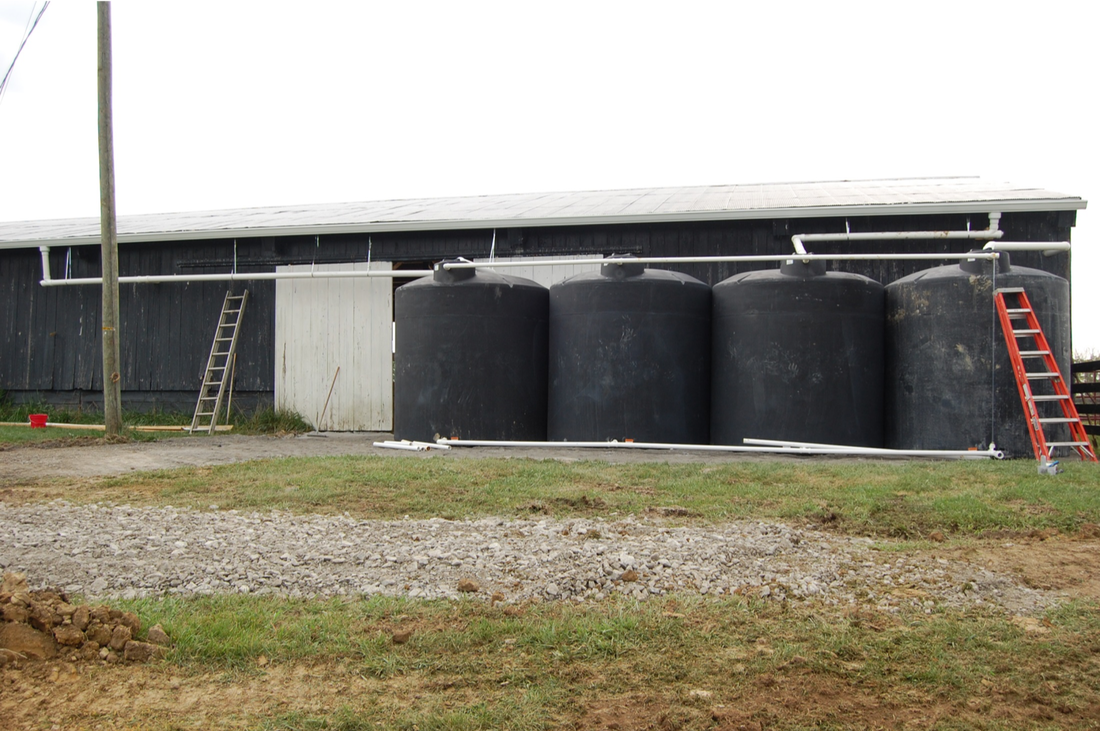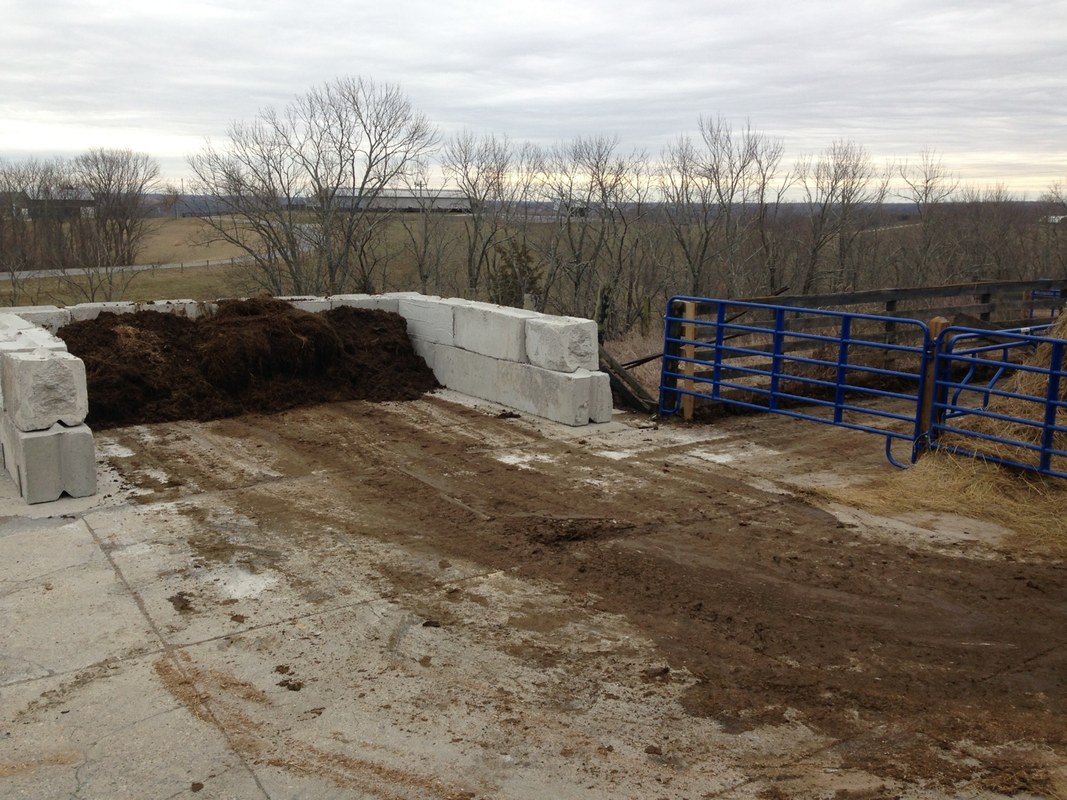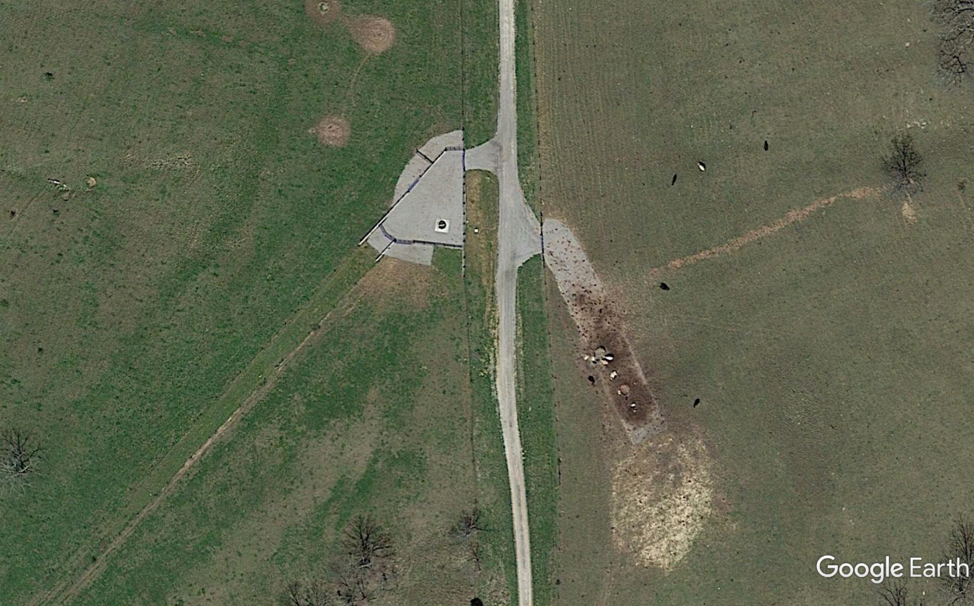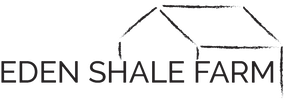|
Dr. Steve Higgins, University of Kentucky Lanes are essential for moving cattle and creating efficiency on beef cattle operations. A good example of this can be seen in the layout of western feedlots (Figure 1). An examination of Figure 1 shows the intersection of two lanes, which can provide a route into four different lots. Along the path of a single lane, cattle can be lead into four different lots. Getting cattle from the lane into a lot is accomplished by flaring out the lane and closing a cross gate to funnel cattle into one of two available lots. The benefits of lanes can be applied to pasture-based Kentucky cattle operations of any size. Lanes can be used to move cattle from pasture to pasture, and to access structures or barns, handling facilities, and load-out areas, which are obvious connections. Lanes can also be used so cattle can use areas with shade. Figure 2 shows a lane on the Eden Shale Farm in Owenton, Ky. This lane is used to move cattle to and from small research paddocks and to the handling facility. However, the lane is also used seasonally so cattle can use a shady grove of trees in the center of the photo. A lane can create efficiency for a cattle operation by saving time and effort. In addition to moving cattle from point to point, lanes can have important cattle production components, such as watering stations, gates, mineral sources, and feeding structures. Properly situated, these components can be used by cattle in multiple pastures, saving the producer time and money depending upon the layout and acreage. Figure 3 shows a watering station that has been situated at the end of a lane and at the intersection of two pastures. This lane tees into another lane, which is also grazed. The hub that is created can be used to move cattle from field to field as well as to provide a watering station for multiple pastures and the two lanes. There is also space within the hub for hay feeding, a mineral source, and portable feed bunkers. Feeding cattle in lanes or hubs makes them easier to catch. Waste hay and manure is easy to remove with a hardened surface. Farm roads normally are thought of as a means of moving trucks, tractors, and equipment. However, they can also serve as a means for moving cattle. Gates along a road or lane are an obvious choice to limit cattle movement. However, cattle guards, strategically placed and constructed using concrete, steel pipe, or electric wire, can be used as a stopgap structure to keep cattle from getting off the farm and onto highways. The width of the lane should be sized to accommodate the herd size, the number of animals being moving at one time, and vehicles. The lane could be as narrow as eight feet to reduce cost for materials. However, this may be too narrow to accommodate farm equipment and vehicles. Conversely, lanes should not be too wide. A wide lane is a waste of space that increases the cost of materials for all-weather surfaces, fences, and gates. A wide lane may also require more than one person to move cattle and may cause producer frustration, as cattle will always go the wrong way if given the opportunity. However, the lane can and should be widened in places to accommodate fence-line feeder, waterers, and sharp turns. The width of a lane should be planned based on available materials, cost, and personal preferences. Filter fabric typically comes in rolls that are 12 to 15 feet wide. Some vendors only stock 15-foot rolls. This allows producers the option of incorporating 12-foot to 14-foot gates in the design. Regardless of the size of the gate used, it should be rigid enough to handle the pressure exerted by cows or bulls. A heavy 16-foot gate places a significant load on swing posts and may create problems after prolonged use. Gate latches should be easy to operate. A bull-nose latch is a good choice as it is functional and simple to operate. Some producers prefer gate latches that can be operated from horseback, which can create lead to better flow and additional efficiency. The type of surface will depend on how often a lane will be used, when it will be used, and the number of cattle using it. Soil type and drainage will affect the load-bearing capacity of a surface. Leaving the surface as grass is an effective way to reduce cost when a few cattle need to be moved a long distance some of the time. More frequent use or winter-time use will require a more robust surface. An example of a reinforced surface is geotextile fabric and rock heavy-use pad. Steep slopes, drainage, and frequent use may require a more robust surface constructed using geotextile fabric and rock with the addition of geocells or a plastic grid incorporated into the design. Other options for strengthening the surface could include concrete cinder blocks, tire cylinders, otherwise known as Mechanical Concrete©, soil cement, and concrete. The surface type dictates how well and how quickly cattle should be or can be moved. Any drainage issues should be addressed at the time of installation. Often, a producer will not have time or funds to redo anything afterward. Adequate fencing is required in order to make the lane last, to eliminate the chance of escapes, and reduce maintenance. Tame cattle may respect a lane fenced with electric tape. A more permanent and heavily reinforced fence can be constructed using welded cattle panel or four- or five-board plank. Wood fencing can be constructed using white oak boards or 2 by 6 treated lumber wood materials. However, white oak boards are in short supply, which is increasing the cost. Treated lumber is readily available but may have longevity issues. The installation of lanes can be justified by the “hard” savings of time and labor saved. Conversely, not having lanes can increase time considerably and creates tremendous stress on cattle and the handler. Moving cattle without a lane or with a poorly designed one can make for a very long and hard experience. Another example of a “hard” savings is that when cattle are stressed, conception rates can be lowered, cost per pregnancy goes up, and the additional stress and exercise interferes with growth. However, there may be “soft” savings that can be attributed that are less obvious. An example of soft savings might be the inclusion of a large waterer that provides abundant clean water to cattle. If sited correctly using the 600- or 800-foot rule, this watering source may reduce pinkeye or other bacterial infections caused by limited access to water. This in turn could reduce veterinary costs. If the watering source is laid out correctly, these benefits may extend to multiple pastures and groups of cattle. Summary Pasture-based grazing operations require that cattle be moved on a reoccurring basis to multiple pastures. Ideally, the number of pastures could be 6 to 24 depending on the size, scale, and management style of the operation. The most efficient way of moving cattle is to install gates as close together as possible to reduce travel distances between pastures. As a consequence, a lane or lanes should be installed, with an appropriate surface, to facilitate movement and ease management. A producer may want to include cattle grazing components such as watering stations, mineral, and forage and supplemental feeders, in the lane design, to create a synergistic effect to further increase efficiency and ease management. Comments are closed.
|
Archives
June 2024
Categories
All
Welcome |
CONTACT US |
EMAIL SIGN UP |
|
Eden Shale Farm
245 Eden Shale Rd. Office: (859) 278-0899 Owenton, KY 40359 Fax: (859) 260-2060 © 2021 Kentucky Beef Network, LLC.. All rights reserved.
|
Receive our blog updates
|




 RSS Feed
RSS Feed
